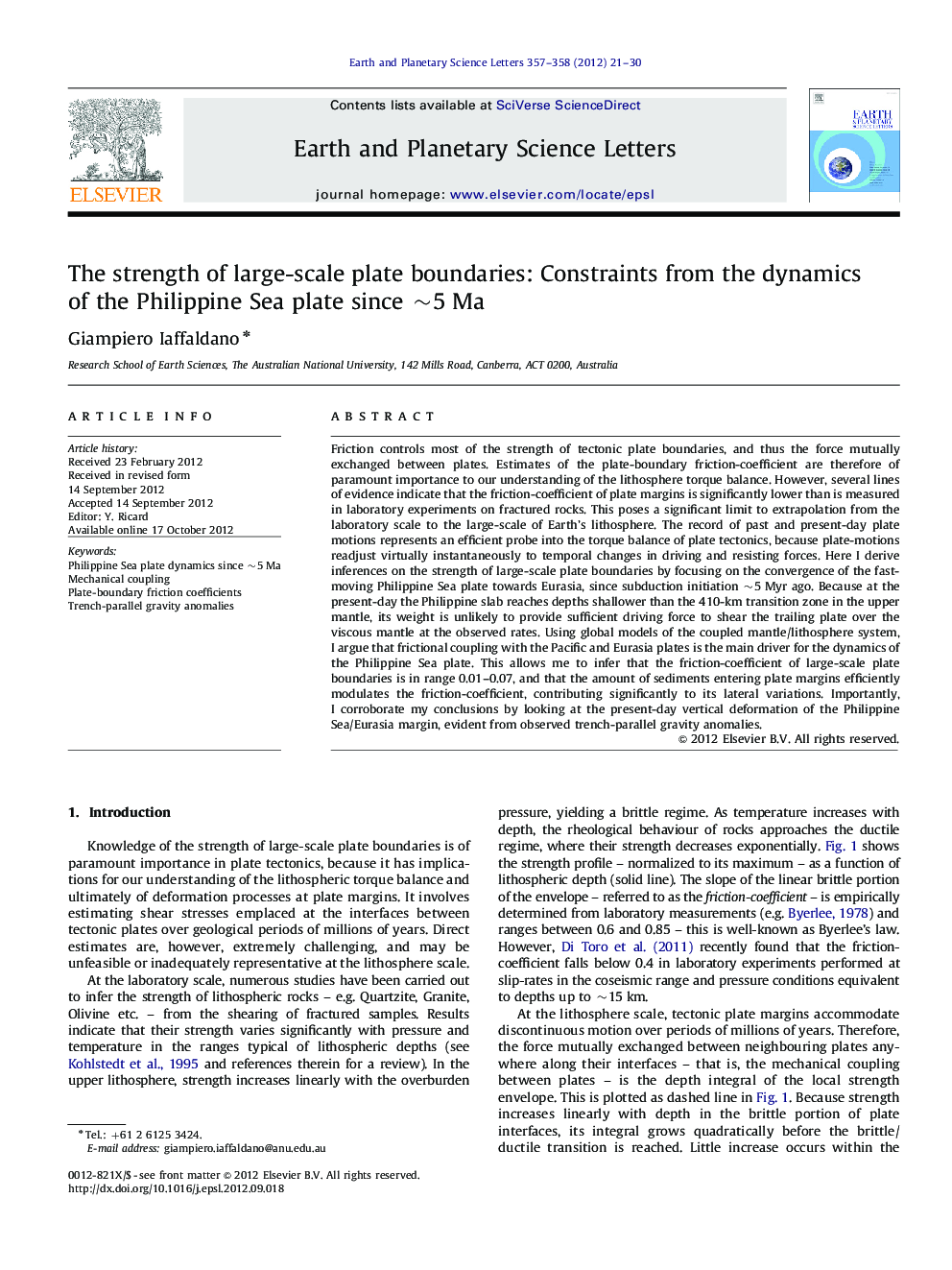| کد مقاله | کد نشریه | سال انتشار | مقاله انگلیسی | نسخه تمام متن |
|---|---|---|---|---|
| 4677276 | 1634794 | 2012 | 10 صفحه PDF | دانلود رایگان |

Friction controls most of the strength of tectonic plate boundaries, and thus the force mutually exchanged between plates. Estimates of the plate-boundary friction-coefficient are therefore of paramount importance to our understanding of the lithosphere torque balance. However, several lines of evidence indicate that the friction-coefficient of plate margins is significantly lower than is measured in laboratory experiments on fractured rocks. This poses a significant limit to extrapolation from the laboratory scale to the large-scale of Earth's lithosphere. The record of past and present-day plate motions represents an efficient probe into the torque balance of plate tectonics, because plate-motions readjust virtually instantaneously to temporal changes in driving and resisting forces. Here I derive inferences on the strength of large-scale plate boundaries by focusing on the convergence of the fast-moving Philippine Sea plate towards Eurasia, since subduction initiation ∼5 Myr ago. Because at the present-day the Philippine slab reaches depths shallower than the 410-km transition zone in the upper mantle, its weight is unlikely to provide sufficient driving force to shear the trailing plate over the viscous mantle at the observed rates. Using global models of the coupled mantle/lithosphere system, I argue that frictional coupling with the Pacific and Eurasia plates is the main driver for the dynamics of the Philippine Sea plate. This allows me to infer that the friction-coefficient of large-scale plate boundaries is in range 0.01–0.07, and that the amount of sediments entering plate margins efficiently modulates the friction-coefficient, contributing significantly to its lateral variations. Importantly, I corroborate my conclusions by looking at the present-day vertical deformation of the Philippine Sea/Eurasia margin, evident from observed trench-parallel gravity anomalies.
► Mechanical coupling as driver for the Philippine Sea plate dynamics since∼5 Ma.
► Friction coefficient of plate-boundaries in range of 0.01–0.07 was inferred.
► Inferences explain also the gravity anomalies at the Philippine Sea/Eurasia plate margin.
Journal: Earth and Planetary Science Letters - Volumes 357–358, 1 December 2012, Pages 21–30